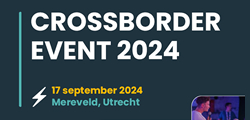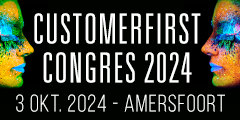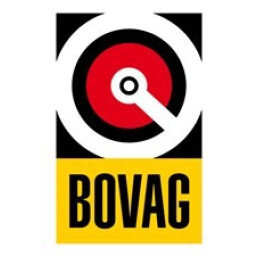[column] 5 tips voor succesvolle B2B webinars
![[column] 5 tips voor succesvolle B2B webinars](/b2b/weblog/2020/03/[column]-5-tips-voor-succesvolle-b2b-webinars/42956335_l.jpg)
- B2b
- 26 mrt 2020 @ 09:36
- Link
-
Gerard van den Bogaart
Marketing Strategist
Referro B2B Marketing - Kennissessie
- 26 mrt 2020 @ 09:36
- Gerard van den Bogaart
Vanaf vandaag gaat Gerard van den Bogaart van Referro regelmatig publiceren over nieuwe marketingtechnieken, klantsuccessen en internationale B2B-ontwikkelingen. Vandaag: hoe kun je een B2B webinar succesvol en spannender maken.
In B2B webinars, the focus is often on a type of ‘frontal teaching’ approach – which often ends up feeling rather uninspired. The teacher speaks, the students listen (more or less) attentively – frontal teaching is not exactly considered to be best practice by educators. And yet it is still the most frequently used teaching style when it comes to educating about complex topics.
So, it’s no surprise that B2B marketing sports a lot of webinars that rely on frontal teaching as well: After all, the industry is teeming with complex topics.
Webinars often feel like math lessons on Friday afternoons.
Many B2B brands put a lot of effort into advertising their webinars, but often seem to forget in their “lesson preparation” that, despite the school methodology, their webinars are not required courses relevant to exams. The result: Webinars often feel like math lessons on Friday afternoons and – if you look at the number of participants – a lot of the audience drop out again rather quickly.
Follow our 5 tips on how to make your B2B webinar both informative and entertaining, how to keep your audience engaged from the start of the session until its end – and how to convey your content efficiently.
Your best bet is to give your viewers the opportunity to immediately identify with your content.
1. Find the right hook for your webinar topic
You are more familiar with your topic than your audience is. You talk about it every day, yet your target group may have heard about it only recently.
Because of this, you run the risk of expecting way too much from your audience at the beginning of your webinar. When this happens, your webinar becomes a frustrating experience – and a part of your audience will switch off more quickly than you would like them to. According to scientists at Carleton University, Canada, you don’t have more than 50 milliseconds online to convince:
Your best bet is to give your viewers the opportunity to immediately identify with your content. Use a quote, a metaphor or an analogy that anyone can relate to as an introduction and create an emotionally engaging introduction to the topic.
It’s also a good idea to combine catchy keywords with strong imagery right at the beginning of your presentation – and by that, we don’t necessarily mean product pictures and corporate content. Your webinar really shouldn’t look and sound like your website or product brochure. Instead, you have a chance to inspire your audience with unusual perspectives on your company and to provide them with new insights and impulses – something that webinars are more useful for than any other digital format.
2. Keep the whole thing in mind when designing your webinar
Like everything else in marketing, a strong hook is not enough.
To make sure that your story has the impact intended, you have to maintain the level you set at the beginning until the very end of the webinar.
To achieve this, you don’t just have to depend on storytelling:
For a visually appealing presentation, it is worth making use of the “leitmotif” principle.
With design elements that are visually connected to each other, you make it easy for your audience to follow you slide by slide.
A high-quality image series, which are now also available on stock image platforms for a small budget, is just as suitable for this as a cleverly used filter that gives individual images from different sources a consistent look.
When designing your webinar presentation, always keep in mind that your audience is not in the same room as you. They are sitting in front of a screen and looking at your slides most of the time. Because of this, the design should at least to some point also convey everything that you express offline, e.g. through your confident appearance and gestures. High design quality and consistency are even more important in webinars than in classical presentations.
3. Keep an eye on your goal
The main feature of frontal teaching is that all attention is focused on one speaker. For your webinar that means you are the boss – your presentation is your statement on the topic.
If you fail to show your listeners clearly where you are taking them, you will lose the advantage of the trust that you enjoy as an expert. A clear goal and your point of view should therefore also be reflected on your slides:
Give your presentation a reasonable structure and make this structure transparent. Separation slides between individual topic blocks provide clear orientation – to your audience and also to yourself. In addition, at the beginning of the webinar, you should give a quick outlook on what the webinar will be about and summarize your contents in a conclusion – the benefit will be even more obvious to your audience.
4. Visual information: focus on the essentials
There’s one thing you should always consider: It’s your presentation that deserves the attention of the audience, the visual part of your webinar should only support your main theses.
Therefore, cut down texts to the truly important bits. If you still need a lot of three-liners, give your audience enough time to read.
The 20/20 rule is a good recommendation to start with here, especially for less experienced webinar hosts:
Your slides should be visible for about 20 seconds and no information should be set in a font size below 20 pt.
5. Use the possibilities of your webinar space creatively
It is obvious that webinars are theory-oriented events. And that is also what viewers expect from the format. Nevertheless, it is worth thinking about where the classical connection between lecture and visual presentation can be broken:
For instance, if your goal is to inform about the usability of software, screen sharing can spare yourself and your audience many tedious explanation slides. It can also make sense to e.g. share the “stage” with a colleague, to dedicate more than the last five minutes to the obligatory FAQ part, or to switch to your webcam window and show a visual of your product on screen – if this leads to an authentic “aha” effect, it will make your presentation more memorable.
And that is exactly what it’s all about: Just because the format is based on frontal teaching, it doesn’t have to feel like a maths lesson on a Friday afternoon. Surely webinars have to be informative, but they can also be enjoyable – if you manage both with your next webinar, your audience will be grateful.
Het wereldwijde BBN International netwerk staat dit jaar op nummer één in de top 15 van de B2B Marcomms Agencies League Table. Referro in Oisterwijk is de Nederlandse vestiging van BBN. Het BBN-netwerk bestaat uit 47 kantoren in 30 landen en telt meer dan 1.300 B2B-specialisten. Regelmatig gaat Gerard van den Bogaart van Referro in dit blog vanuit BBN rapporteren over nieuwe marketingtechnieken, klantsuccessen en internationale B2B-ontwikkelingen.
-
Gerard van den Bogaart
- Werkt bij: Referro B2B Marketing
- Functie: Marketing Strategist
- Website:https://www.referro.nl/
- Profiel »
Nieuwsbrief
- Mis niets! Schrijf je nu in voor de gratis nieuwsbrief.
- Inschrijven
Laatste reacties
Word abonnee en ontvang:
- ✔ 16 keer per jaar MarketingTribune Magazine
- ✔ Korting tot wel €100,- op events
Meest gelezen
- De 8e editie van Nima Marketing Day vindt plaats op donderdag...
- Martien Korting van Gripp: 'Ondernemers in de creatieve sector...
- Jolien Koelewijn: 'Chocomel is een beetje van iedereen'
- BvA: Wees kritisch maar noem duurzaamheid wel
- [onderzoek] Druk op klantenserviceorganisaties neemt toe
- Mylene Samuels van ABN Amro: 'Word verliefd op het probleem,...
Laatste Nieuws
- 'Excellente marketing kan niet... 03-05-2024
- Strategische denkers (14):... 02-05-2024
- 'Mensen zijn minder complex dan ze... 02-05-2024
- Spotler Group neemt Momice over02-05-2024
- 'Merken hebben onwijs veel te winnen... 01-05-2024
- Keynote Nathalie Lam van Philips:... 30-04-2024
MarketingTribune Events
- 28mei 2024

Retail Media Day
- 13jun 2024

NIMA Marketing Day
- 17sep 2024

CrossBorder Event
- 3okt 2024

CustomerFirst Congres
- 10okt 2024

Shopping Today
- 12nov 2024

Grand Prix Content Marketing




